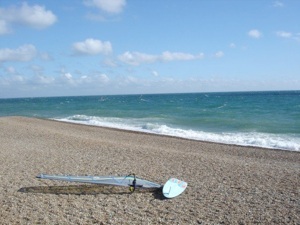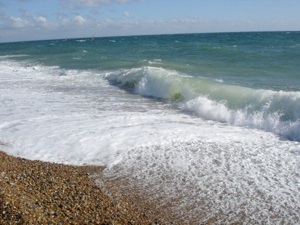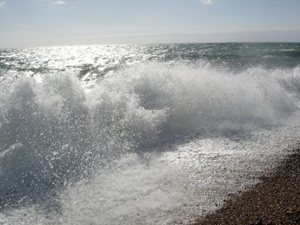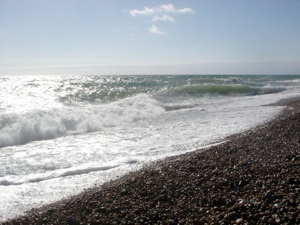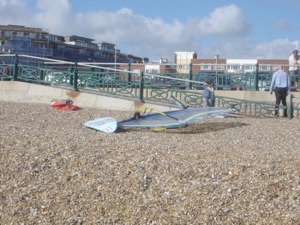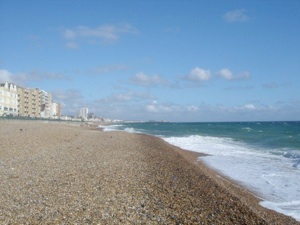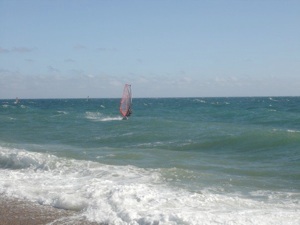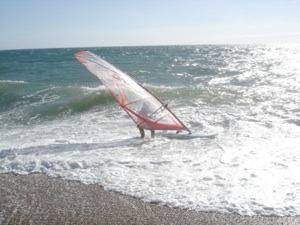Location
Brighton and its neighbouring city Hove are situated on the south coast of England, about 1.5h drive from London by car. Brighton has been a famous sea resort for some centuries now and it has just rejunivated itself recently with lots of new bars and shops. The obligatory pier, offering lots of attractions from the amusement sector, can be found next to its rusty, burned down predecessor, which stretches several hundred meters into the sea.
Apart from its touristic attractions Brigthon has been host to the PWA tour some years ago and is still an important location for national windsurfing events.
The Spot
Hove is the neighbouring city of Brighton just a bit to the west. If you approach the city from the hilly North like I did, you will have an impressive view on the sea on your way down to the beach. You will find only very limited (free of charge) parking space next to the beach, so make sure to arrive in time at the spot.
The beach is composed of shingles and therefore no sand will hinder you to rigg directly on the beach. Next to the beach is more or less pavement and concrete and thus not very comfortable for rigging.
There is a small windsurf station a bit further to the west with even a small, artificial surf basing (more like a very shallow (50 cm) ‘swimming pool’) in which the beginners can try their first steps.
The spot itself is quite demanding, especially during high tide. As the beach descends steeply into the sea one stands already up to the neck in the water only 2m away from the shoreline. This makes it a bit difficult to get through the shore break. Having been lucky the first time and having enjoyed about half an hour tacking and jibing out on the sea (apart from my annoying, not properly turning sail), I was washed back to the shore during my second try. Much to the amusement of some young boys I crawled back up the beach and picked up my gear, being still in quite good shape and only with a few scratches on the surface of board and sail.
Safety tip: make sure to remember where the concrete groins are situated as you will not see them from the water during high tide and we found it quite disturbing not to know exactly where they were.
Wind & Waves
The prevailing wind direction is - as common at the North Sea - westerly or north-westerly (side-shore from the right or cross-of-shore from the right).
It is much easier to windsurf during mid or low tide as the shore break is not so heavy and it will not drag you out into the sea so easily. Some kilometers to the West there is another spot with a beach, which stretches from the southwest to the northeast, which allows a more easier access to the water.


